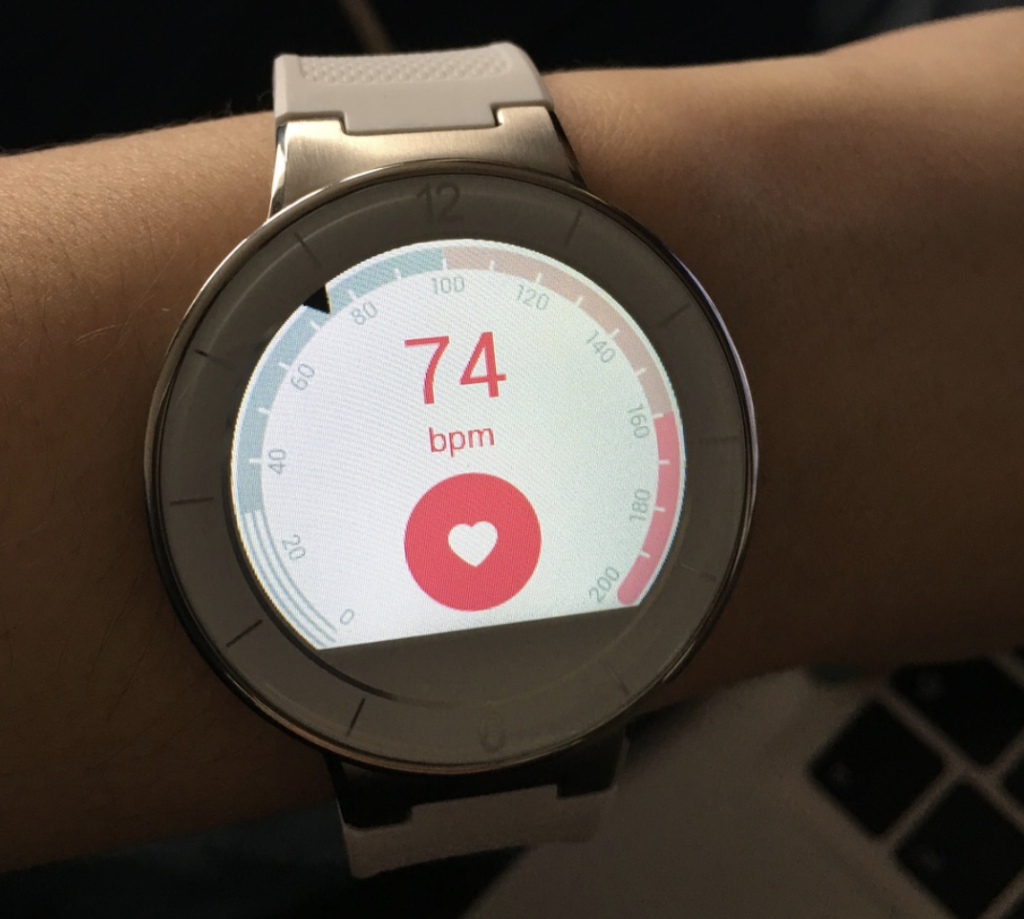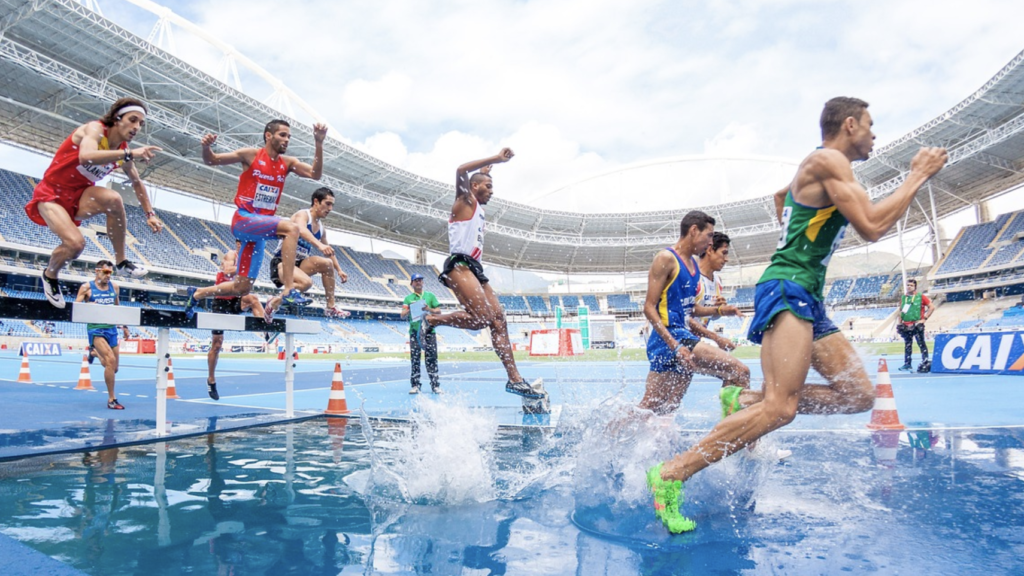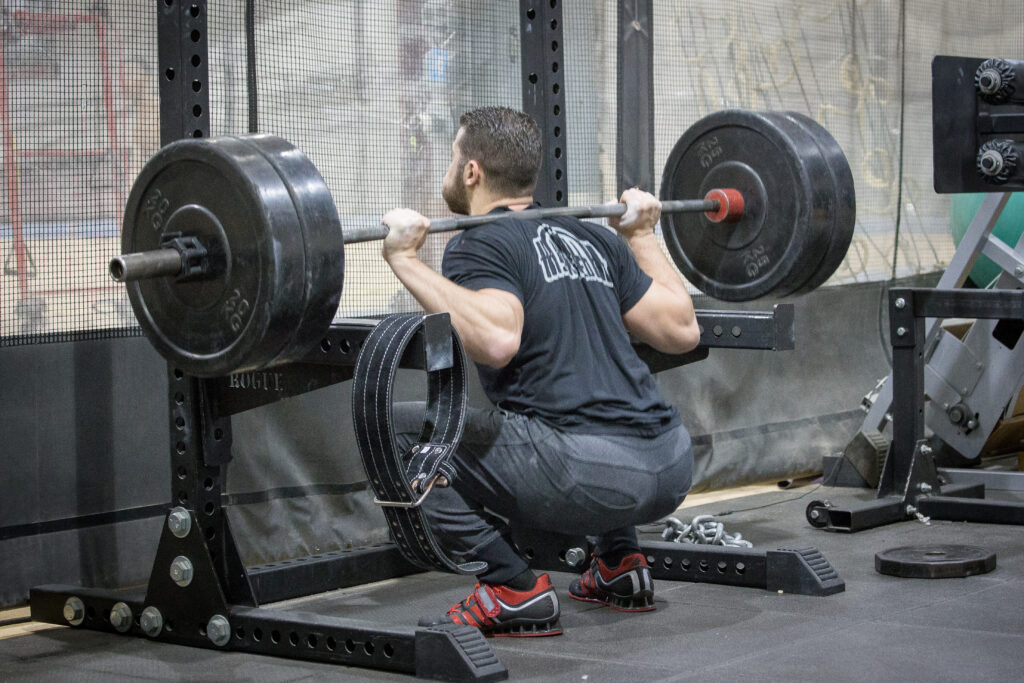Editor’s note: This article is an op-ed. The views expressed herein and in the video are the author’s and don’t necessarily reflect the views of BarBend. Claims, assertions, opinions, and quotes have been sourced exclusively by the author.
Today’s professional sports organizations are utilizing Heart Rate Variability (HRV) to better understand the unique stresses and recovery rates of individual athletes. We all know that proper recovery is a major variable in the performance of any given athlete, and with the implementation of HRV monitoring, athletes are able to “get in the zone” on a more consistent basis.
It is important to note that HRV is a highly individualized measurement, and unlike resting heart rate ranges, there is no “prime” range for HRV currently established.
What Is Heart Rate Variability?
Heart rate variability can be defined as the variations that exist between successive heart beats. To understand how HRV can play a role in our performance, we must understand the underlying forces controlling it. Typically measured over an extended period of time (10 minutes or more) in a resting state, HRV is recorded in milliseconds (ms) analyzing the hearts irregular beat intervals, which is perfectly normal.
For example, your resting heart rate can be measured at the wrist for any given amount of time, but more than likely that number will not likely repeat itself should you measure a second time. This phenomena is attributed to our autonomic nervous system (ANS), and more specifically, the sympathetic and parasympathetic systems. The sympathetic nervous system activates in times of stress, and as a result, elevates an individual’s heart rate to prepare for the unexpected, aka fight or flight.

The parasympathetic system then regulates recovery from these stresses, which results in a decreasing heart rate and establishing resting equilibriums. With a higher heart rate, we experience less variability, or lower HRV, and with a lower heart rate we experience more variability producing a higher HRV. Through thought (intrinsic) or outside disturbances (extrinsic), our ANS can react like a light switch and is the basis of the normal irregularities we experience. However, these systems can wreak havoc on your recovery and ability to perform.
For strength athletes, output is of very high priority. The load and volume required to compete in this arena is not something replicated amongst common activities. And let’s face it, we are constantly looking for new ways to obtain an edge whether it be via nutrition, training splits and methodologies, supplements, and training gear, and yet from time to time each of us have probably come face-to-face with the brick wall that we call a plateau. The inevitable time where our input (sleep, recovery, nutrition, etc) cannot compete with our output. The toll it takes on our nervous systems is one we usually need to step away from training and recover, but what if we had the ability to monitor these systems and keep them as optimal as possible?
Recovery and Its Effect On HRV
A consistently low HRV reading translates into effective recovery modalities. Training and competition produce tremendous amounts of physical and mental stress on our bodies. The more we can tap into our sympathetic systems, the more we can achieve athletically when compared to our resting state. Many products on the market are aimed at enhancing the sympathetic response: Pre-workouts, energy drinks, thermogenics, the list goes on.
However, what goes up, must come down. Many times the lasting effects of these sympathetic stimulators inhibit our parasympathetic response, leaving us “stuck” in sympathetic mode and rendering our recovery efforts fruitless. When we are unable to recover, then our ability to perform at a high level again is drastically decreased. Once we establish that our recovery is just as important as our training begs the question — how can we improve our parasympathetic response? You can hit the market, of course, and find many labels claiming to improve your rest and recovery. Maybe not to the extent as their sympathetic counterparts, but I digress.
The answer to better recovery is much harder than it appears. Here’s what we know — nutrition is vital for recovery, as is sleep. Both necessities account for the physiological stressors we endure. Nutrition provides not only energy, but the building blocks for repair and function. Sleep promotes the endocrine responses necessary for repair, growth, and optimal function.
If nutrition were a nail, then sleep would be the hammer, driving the final touches on our recovery processes. Without one or the other, it’d be tough to build the war machine that is our body. Beyond that, we have tons of recovery modalities aimed at attacking the physiological breakdowns of the body. Cryo, power tools with massage tips, sensory deprivation, mobility bands, and much more.
When was the last time you lied down to sleep only to be plagued by endless thought which keeps you tossing and turning? Thoughts like, maybe your game didn’t go as planned, maybe you embarrassed yourself in front of your crush, or maybe you’re stressing about the work that’s due this week. Our intrinsic nature stimulates a sympathetic response. Aside from sports psychologists and therapists, there aren’t many techniques out there aimed at the emotional recovery we need to physically recover. But as humans first, we learn to adapt and overcome. We develop methods of our own to deal with the stresses of our lives. Often times we blindly tread in methodologies without drawing any logical conclusion as to the true effectiveness of our efforts, and that’s where HRV can come in.
As a strength athlete, our body’s ability to perform is highly dependent on the activity and health of our nervous systems. Because strength is predominantly determined by the mind’s effectiveness to signal and recruit muscle fibers, then any negative deviation from optimal will result in a subpar performance.
The reason we are able to hit PR’s under the lights and in front of the crowd is a result of an adrenaline release, resulting in hyper-activity of the brain (supported by Electroencephalography aka EEG research) and an ability to tap into the deepest layers of our strength via muscle recruitment.
To reach incredible lifting feats as an athlete, then our efforts into training should equal or even exceed what we put into recovery.
How You Can Track HRV?
The most effective way to measure HRV is with an ECG (electrocardiogram). These are commonly found in hospitals — but don’t worry — technology has allowed us to create much more user friendly models. Professional sports organizations now monitor HRV on their athletes without them leaving the compound. This precise equipment is extremely expensive, aka ~$1500 on the cheaper end of the spectrum.
These devices are worn on or around the chest to collect the most accurate data. Of course, for most athletes, gaining access or even the budget to acquire this equipment is a lofty goal in and of itself. Professional sports teams have both the medical connections within their staff and often a huge budget that’s required to purchase, operate, and translate the readings to useable data for the sports performance team. Luckily, innovators and creators have developed products derived from the fundamental understanding of HRV, which is giving everyday athletes the ability to obtain the edge they need.

More affordable pieces like the WHOOP technology claim to use HRV type data to predict recovery levels, then suggest whether or not to train that day based on the pulse reading from your extremity at the wrist. As opposed to direct HRV recordings, WHOOP is collecting pulse readings, namely resting heart rate (RHR) and collecting information on ANS activity. The deviations in that RHR often directly correlate to the predominant sympathetic system.
Typically, extremity technology can’t actually measure HRV to its fullest extent, and it’s simply an educated guess. Also, technologies like this are limited due to their nonexistent insight into the emotional aspects of being an athlete.
But that doesn’t render these educated guess HRV systems useless. Just like the scales at home that measure our weight and body fat with educated guesses, these tools give us a consistent measurement. Just keep in mind that these readings will fluctuate based on parasympathetic and sympathetic responses (even if it’s not spot on accurate). What this means for you? No hefty investments to track your ANS activity.
Do It Yourself: Heart Rate Variability
We know heart rate increases via the sympathetic system. Therefore, a higher heart rate signals a higher sympathetic activity, and a lower heart rate signals a functioning parasympathetic system.
Step 1: Get Some Rest
To get started with tracking your HRV, you should complete 1-2 days of rest to let your body completely recover. Following the days of rest, take your heart rate for 1-minute every morning upon waking. By utilizing the waking measurement, we can take advantage of the only time of day our bodies regulatory systems are at their most consistent state.
Suggestion: Keep a diary or journal and record not only your waking heart rate, but also your training/activity for the day, and any emotional events or stressors and how you dealt with them.
Step 2: Assess the Numbers
Successful stress management will reveal consistent, lower resting heart rate ranges, while higher numbers will suggest the need for intervention. For example, if your resting heart rate after your recovery period of 1-2 days was between 66-70 beats per minute (bpm), then we could establish that range as our recovered baseline. Therefore, if I’m recovering properly, my heart range will be around 66-70 bpm following my training or competition days.
If your heart rate increases by more than 10 beats per minute from our established baseline (ex: 76-80 bpm), then we know our sympathetic activity is heightened and we need to consider prioritizing recovery methods. As our bodies become more and less conditioned, our resting heart rate will drop and rise, respectively. This is perfectly normal, and the best way to account for the fluctuation in resting heart rate would be how you are feeling emotionally.
Step 3: Apply the Data to Your Training
Let’s say that during the off-season my priority is strength. I’ve cut back on conditioning, and I start to see my bpm rise every morning for about a week. I’m feeling great though, and motivated as ever. Everyday I wake up feeling ready to go, but my bpm is now sitting in the 74-78 range. As long as I’m feeling great, this is my new baseline for my “recovered” range.
The same applies for our more conditioned state. As I gear up for the in-season, I’m focused more on my conditioning. My waking heart rate is consistently dropping, finally finding consistency in the 62-66 bpm. As a conditioned athlete, I set this range as my new recovery range.
Wrapping Up
This do it yourself HRV method, and other methodologies outside of direct ECG are not completely clinically accurate and cannot measure HRV to an exact. Although, we can logically conclude that the monitoring of our ANS activity will directly contribute to our successful performances as an athlete.
References
1.) Cornell, DJ, Paxson, JL, Caplinger, RA, Seligman, JR, Davis, NA, and Ebersole, KT. Resting heart rate variability among professional baseball starting pitchers. J Strength Cond Res 31(3): 575–581, 2017
2.) Achten J, Jeukendrup AE. Heart rate monitoring: Applications and limitations. Sports Med 33(7): 517–538, 2003.
3.) Armstrong LE, VanHeest JL. The unknown mechanism of the overtraining Syndrome: Clues from depression and psychoneuroimmunology. Sports Med 32: 185–209, 2002.
